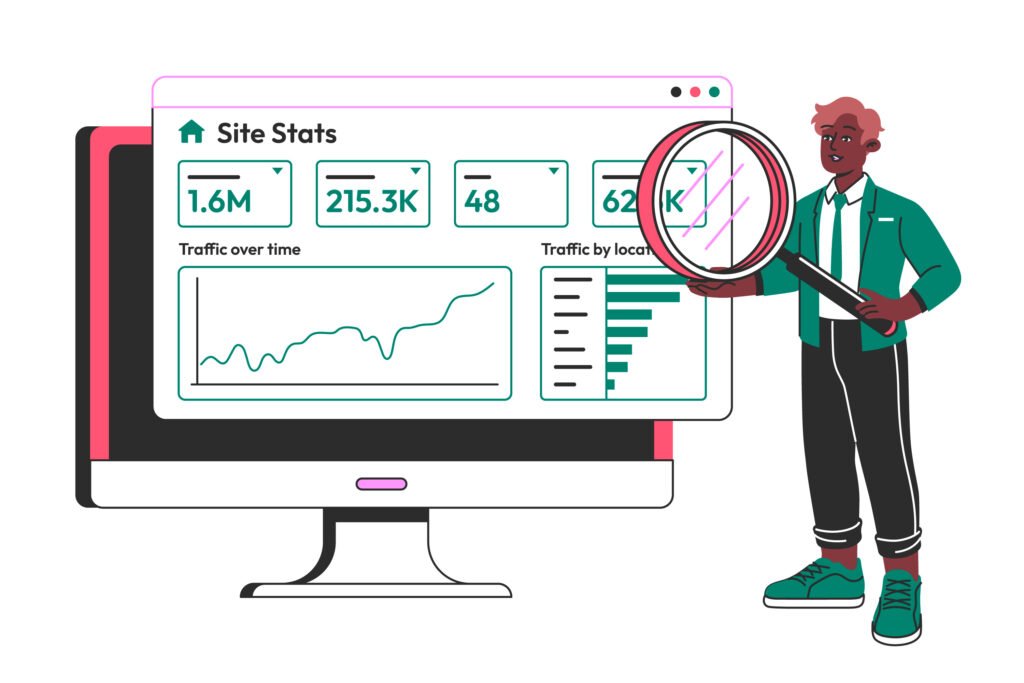
Unlocking Insights: Google Search Console’s New Core Web Vitals Report
In the ever-evolving world of digital marketing, staying ahead of the curve is essential for success. One of the latest developments in this space is the introduction of the Core Web Vitals report in Google Search Console. At Upbryt Technology, we recognize the significance of this update and how it can impact your website’s performance and user experience. In this blog, we’ll delve into what Core Web Vitals are, the insights provided by the new report, and how you can leverage this data to enhance your website.
What Are Core Web Vitals?
Core Web Vitals are a set of specific factors that Google considers critical for delivering a good user experience on the web. They focus on three key aspects:
Largest Contentful Paint (LCP): This measures loading performance. LCP tracks the time it takes for the largest visible content element on a page to load, aiming for a threshold of 2.5 seconds or less.
First Input Delay (FID): This gauges interactivity. FID measures the time from when a user first interacts with a page (like clicking a link) to the time when the browser is able to respond. The ideal target is under 100 milliseconds.
Cumulative Layout Shift (CLS): This assesses visual stability. CLS measures how much the layout shifts during the page load process, with a goal of maintaining a score of 0.1 or less.
These metrics not only influence your website’s ranking in search results but also play a crucial role in user satisfaction and engagement.
The New Core Web Vitals Report in Google Search Console
Google Search Console has long been a valuable tool for webmasters and digital marketers, providing insights into website performance, indexing status, and more. With the recent update, the addition of the Core Web Vitals report enhances its functionality significantly.
Key Features of the Core Web Vitals Report:
Performance Overview: The report provides a quick overview of how your website performs against the Core Web Vitals metrics. It categorizes pages as “Good,” “Needs Improvement,” or “Poor,” making it easy to identify where to focus your optimization efforts.
URL Inspection Tool: You can analyze specific URLs to see how they perform concerning Core Web Vitals. This tool helps diagnose issues and offers suggestions for improvements.
Grouped by Status: The report groups URLs into three categories, allowing you to prioritize which pages need attention based on their performance status.
Historical Data: The report also offers historical data, enabling you to track performance changes over time and measure the impact of optimizations.
Why It Matters for Your Website
Understanding and leveraging the Core Web Vitals report is essential for several reasons:
Enhanced User Experience: A website that loads quickly, responds promptly to user interactions, and maintains visual stability significantly enhances user experience. Happy users are more likely to engage, convert, and return.
Search Engine Ranking: Google has confirmed that Core Web Vitals are part of its ranking criteria. Improving these metrics can positively affect your search visibility, driving more organic traffic to your site.
Competitive Advantage: Many businesses still overlook the importance of Core Web Vitals. By focusing on these metrics, you can gain an edge over competitors who may not be prioritizing user experience.
Informed Decision-Making: The insights provided by the report allow for data-driven decisions. Instead of guessing what might improve your site’s performance, you can base your strategies on concrete data.
How to Optimize Your Core Web Vitals
At Upbryt Technology, we believe in taking actionable steps to enhance your website’s performance. Here are some strategies to improve your Core Web Vitals:
Optimize Images: Ensure images are compressed and appropriately sized. Use modern formats like WebP for faster loading times.
Minimize JavaScript and CSS: Reduce the amount of JavaScript and CSS that needs to be loaded. Consider implementing code-splitting and minification techniques.
Leverage Browser Caching: Enable caching to reduce load times for repeat visitors. This can help improve LCP significantly.
Prioritize Content Loading: Use techniques like lazy loading to ensure that images and videos load only when they are needed.
Monitor and Adjust: Regularly check the Core Web Vitals report in Google Search Console to monitor performance and make adjustments as necessary.
Conclusion
The new Core Web Vitals report in Google Search Console is a game-changer for webmasters and digital marketers alike. By understanding and leveraging the insights it provides, you can significantly enhance your website’s performance and user experience. At Upbryt Technology, we’re committed to helping businesses succeed in the digital landscape. Start optimizing your Core Web Vitals today and unlock the full potential of your online presence!

Leave A Comment